- europages
- >
- COMPANIES - SUPPLIERS - SERVICE PROVIDERS
- >
- separating system
Results for
Separating system - Import export

IGUS® GMBH
Germany
Other information Installation video: Instructions for the opening and closing of the E-Tubes Series R117 Inner height hi: 21 mm Inner widths Bi: 20 - 100 mm bending radii R: 63 - 180 mm Pitch: 30,5 mm E-Tube, snap-open along the inner radius on both sides Series R118 Inner height hi: 21 mm Inner widths Bi: 20 - 100 mm bending radii R: 63 - 180 mm Pitch: 30,5 mm E-Tube, snap-open along the outer radius on both sides Series R157 Inner height hi: 40 mm Inner widths Bi: 40 - 200 mm bending radii R: 100 - 250 mm Pitch: 46 mm E-Tube, snap-open along the inner radius on both sides Series R158 Inner height hi: 40 mm Inner widths Bi: 40 - 200 mm bending radii R: 100 - 250 mm Pitch: 46 mm E-Tube, snap-open along the outer radius on both sides Series R167 Inner height hi: 50 mm Inner widths Bi: 50 - 250 mm bending radii R: 100 - 300 mm Pitch: 58,8 mm E-Tube, snap-open along the inner radius on both sides Series R168 Inner height hi: 50 mm Inner widths Bi: 50 - 250 mm bending radii R: 100 - 300 mm Pitch: 58,8 mm E-Tube, snap-open along the outer radius on both sides iF-Design-Award for Series R117/R118 and Series R68 ESD classification: Electrically conductive ESD/Atex versions on request UL94-V0 Classifications on request E-Tube made of igumid HT: Hot chips (to 850°C) cannot burn into it. Supplied as a special design on request Other information Series R117 Inner height hi: 21 mm Inner widths Bi: 20 - 100 mm bending radii R: 63 - 180 mm Pitch: 30,5 mm E-Tube, snap-open along the inner radius on both sides Series R118 Inner height hi: 21 mm Inner widths Bi: 20 - 100 mm bending radii R: 63 - 180 mm Pitch: 30,5 mm E-Tube, snap-open along the outer radius on both sides Series R157 Inner height hi: 40 mm Inner widths Bi: 40 - 200 mm bending radii R: 100 - 250 mm Pitch: 46 mm E-Tube, snap-open along the inner radius on both sides Series R158 Inner height hi: 40 mm Inner widths Bi: 40 - 200 mm bending radii R: 100 - 250 mm Pitch: 46 mm E-Tube, snap-open along the outer radius on both sides Series R167 Inner height hi: 50 mm Inner widths Bi: 50 - 250 mm bending radii R: 100 - 300 mm Pitch: 58,8 mm E-Tube, snap-open along the inner radius on both sides Series R168 Inner height hi: 50 mm Inner widths Bi: 50 - 250 mm bending radii R: 100 - 300 mm Pitch: 58,8 mm E-Tube, snap-open along the outer radius on both sides Installation video: Instructions for the opening and closing of the E-Tubes E-Chain® selection aids You can find the right E-Chain® quickly by entering concrete parameters and with the aid of a comparison table. Selection aids Installation instructions Joining and separating of the E-Tubes. Assembly Instructions Application examples Applications in various industrial sectors and in the igus® test laboratory. E2 R100 and E2 R Chip protection, swivelable Excellent protection against chips (even hot chips) Rugged and tight Snap-open alternately along inside or outside - Swivelable or removable lid, short installation time Space-saving through good internal/external dimensions ratio Modular interior separation options Double stop dog system for longer service life and long, unsupported lengths Universal KMA mounting brackets with potential for "all-round" fastening Typical industrial sectors and applications Machine tools Timber Processing Machines General mechanical engineering etc In all areas exposed to dirt and chips iF-Design-Award for Series R117/R118 and Series R68 ESD classification: Electrically conductive ESD/Atex versions on request UL94-V0 Classifications on request E-Tube made of igumid HT: Hot chips (to 850°C) cannot burn into it. Supplied as a special design on request
Request for a quote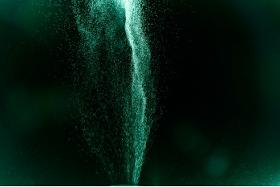
DRESSLER GROUP
Germany
Method for determining the grain size; air jet sieve, vibrating sieve, but also used in a production system for separating the coarse component of a powder so as to obtain the desired grain size distribution. Using acceleration to separate particles of different weights and therefore mostly different sizes.
Request for a quote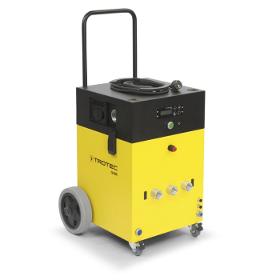
TROTEC GMBH
Germany
IT’S QUITE SIMPLE. PLUS MORE. QUBE+For insulation drying, a comparable set of stacked MultiQubes can simply be replaced with one device – the Qube+. It achieves up to 20 % more area output while being 50 % lighter and 50 % smaller than the tower. Therefore, the transport from the service vehicle to the damage site can be effected 100 % quicker. A multi-device installation with complex hose connections can be omitted without replacement. Just set it up, plug it in, switch it on – all done! No more equipment technology is needed, the Qube+ comes ready for connection with all integrated parts: A powerful VX 5 turbine insulation dryer, a water separator, a 4-stage filter system and an efficient silencer – ultra-compact, united in a robust, stackable aluminium construction, offering clearly more advantages and at the same time causing considerably less costs than multi-device solutions.
Request for a quote
VKF RENZEL GMBH
Germany
The "Quattro" information board functions as a transparent and stable partition wall. The interaction of the aluminium frame in silver anodised and the transparent acrylic panel offers a simple exterior. At the same time, the board can provide a high-quality separation between customers, patients, employees and areas. A partition wall is a practical article to provide protection spontaneously and depending on the situation. Due to its low weight, the article shown is easy to move and mobile. Long queues, disordered areas or new hygiene regulations require the use of a separation or tracking system. High stability is guaranteed by two flat round base plates with a diameter of 400mm each. The light and anodised aluminium profile is placed on them. An acrylic sheet is held in the profile by a rubber in the frame. The transparent sheet ensures that the area of application is not optically reduced despite the use of a partition wall.
Request for a quote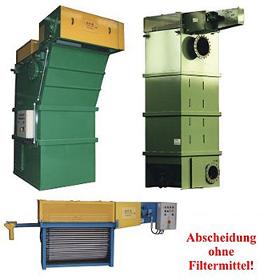
F.E.S. GMBH
Germany
Chain Magnetic Separator are used for the cleaning of liquids contaminated with magnetizable solid particles and foreign oils. F.E.S. separator systems can be used in full-flow or bypass cleaning applications. The separation performance varies depending on the level of contamination and the volume flow rate. Note: The separator systems can be supplied via a separate supply pump, existing system pumps (with sufficient reserve capacity within the existing system components), or a free inlet (with sufficient geodetic height difference). Advantages: No filter aids required High separation efficiency Large throughput capacity Large active separation surface due to favorable separation geometry and optimal arrangement of magnets Low wear and tear Operating Principle: The contaminated liquid is supplied to the separator through the flange (1) located at the bottom.
Request for a quote
RIPPERT ANLAGENTECHNIK GMBH & CO. KG
Germany
For the conveying of filtered-out materials to silos or containers. Pneumatic low-pressure conveyor systems For the conveying of filtered-out materials to silos or containers and for conveying distances of up to 200 m. The conveying air stream is generated by one or more fans. Product description Pneumatic low-pressure conveyor systems can be implemented as a single-pipe system or a ring system. In the case of the single-pipe system, a final separator in the form of a filter or a cyclone is always necessary. In a ring system the conveying air is driven in the ring. In this case the silo or container acts as the separator. Light dust particles that are not separated in the silo or container initially remain in the circulation. With most materials the fine dust particles tend to attach themselves to the coarser ones and are thus separated with them. Hence, a concentration of the fine dust particles in the conveying stream is avoided as far as possible. The loading of the conveying stream essentially depends on the grain size, density and form of the material to be conveyed. As a guiding value, one may assume 250 - 300 g/m³. Higher loads are possible under certain conditions. In cases where there is a high amount of material, e.g. in planing works, where the splinters are directly removed and transported away for further use, this can also be realised with a ring system and several containers. Switchover takes place automatically when the container signals that it is full. Containers are exchanged during operation.
Request for a quote
RIPPERT ANLAGENTECHNIK GMBH & CO. KG
Germany
With high-quality filter tubes and PTFE diaphragms. Paint dust filters Wet painting also results in overspray. Overspray is the solid portion of the paint that is not taken up by the workpiece. According to the purpose of use, the overspray is moist and sticky immediately after release. It is captured by the exhaust air stream in the spray booth and fed to a filter. This can be, for example, a baffle plate filter, paper filter, fleece filter, glass fibre filter or also combinations of these. The adhesive effect causes the paint particles to adhere to the contact surfaces of the respective filter medium, as a result of which a good degree of separation is achieved. However, all these filters are storage filters, i.e. the filters clog up more and more during operation and cannot be regenerated. A filter exchange becomes necessary if the exhaust air rate of the spray booth falls below the minimum. This can be very time-consuming under certain circumstances and the work process must be interrupted in order to do it. To make things worse, not only must the filtered and bound paint residues be disposed of, but also the actual filter materials. Such tooling times are not justifiable for automatic, continuous or multi-layer painting processes. Continuous procedures such as automatically cleaned filters are likewise required for this. The humidity and the adhesiveness of the particles to be filtered are thereby the problem. In order to solve this problem, the paint particles should be relieved of their adhesive capability as far as possible whilst still inside the paint booth. Our patented ‘RTS-Rotation’ system is outstandingly well suited for this. The system is comprised of slowly rotating brush rollers, which take up the adhesive paint particles on the surface of the bristles and allow them to dry there. The bristles are automatically regenerated at pre-specified time intervals by combing devices that swing in at the rear of the brush rollers. The dislodged paint residues can then be removed and disposed of either manually during work breaks or automatically during operation. The degree of separation of this system is, however, insufficient to satisfy the environmental protection requirements concerning residual dust content in the exhaust air. A further filter stage is necessary for that. It must be assumed that the paint particles arriving here are to a certain extent still damp and sticky. For this we use special paint dust filters with high-quality filter tubes with PTFE diaphragms. If necessary, precoating agents (auxiliary dust) are used in order to neutralise the adhesive capability of the particles and to keep the dust layer on the filter elements permeable to air. The precoating agent is injected into the raw air pipe by means of special dosing units. The filter tubes are cleaned by means of compressed air impulse cleaning. The use of this technology requires special know-how. We have had the appropriate experience for almost ten years. The implemented plants have capacities ranging from 5,000 to 90,000 m³ /h. Because of the large number of different paint systems, individual experiments are usually necessary in our pilot plant in order to find the correct solution for the individual case.
Request for a quote
RIPPERT ANLAGENTECHNIK GMBH & CO. KG
Germany
Water-sprinkled spray walls and spray booths with automatic paint sludge filtration system In wet separation, the overspray meets the water film of the spray wall and is thereby bound in the water. The sludge formed by this is discharged using sludge filtration systems. Water-sprinkled spray walls The overspray is sucked in in the lower area of the vertical water drain surface and is bound in water when it meets the film of water. The paint mist is washed out further in the lower section of the washout tower using a vortex washing system with downstream baffle plate separator. In order to replace the water lost due to evaporation, it is recommended to fit an automatic water level controller. The entire quantity of water is fed to the automatic paint sludge filtration system via the disposal pump. A coagulant is added to the water by an automatic dosing unit, as a result of which the paint sludge in the circulating water is disbonded and can be separated more easily. The cleaning of the circulating water takes place in the separately arranged paint sludge filtration system. Depending on the paint system and plant version, the separation system is operated using a full or partial current method. Water-sprinkled spray walls/booths with underfloor paint mist extraction For the painting of large parts with a high paint throughput. The paint mist is sucked in under the grating cover. A substantial part of the overspray is already bound in the water by the constant sprinkling of the entire floor of the basin. The paint mist is washed out further in the lower section of the washout tower using a vortex washing system with downstream baffle plate separator. Optimum capture of the paint mist is guaranteed by the laminar air flow inside the booth. A further advantage over comparable systems is the low water basin height and the associated low foundation depth. The sludge formed by this is discharged using sludge filtration systems. Advantages
Request for a quote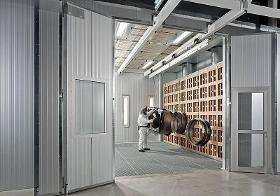
RIPPERT ANLAGENTECHNIK GMBH & CO. KG
Germany
Spray walls and spray booths with dry separation via cartons. For lower utilisation times or overspray quantities RES dry spray booth For lower utilisation times or smaller overspray quantities, spray systems with dry separation offer a meaningful alternative to water-sprinkled systems. The Rippert modular spraying system type RES enables individual adaptation to the respective case of need. The filter system of the RES dry spray wall consists of individual square cardboard boxes. A sheet metal frame serves as a support structure for the filter box. In order to save costs, there is a possibility to vary the individual filter boxes in the spray booth, without exchanging all of the filter elements. Function The overspray is caught by the exhaust air stream and fed to the filter. The solids are filtered out here, while the cleaned exhaust air is blown out into the open air by the fan. Versions The basic version consists of a wall with a two-fold filter stage. Paper filter boxes form the first filter stage. A glass fibre fine filter arranged directly behind it represents the second filter stage. The attached radial fan is equipped with spark protection in the suction nozzle as well as an explosion-proof motor. The spray booth can additionally be equipped with removable or fixed side and ceiling panels. The RES dry spray booth is available in galvanised sheet metal or in stainless steel. Advantages Cleaning / maintenance The spray wall is designed such that the filter elements can be exchanged with little effort in a very short time. Once it is saturated, the filter box is removed from the sheet metal frame and disposed of in an environmentally-friendly manner.
Request for a quote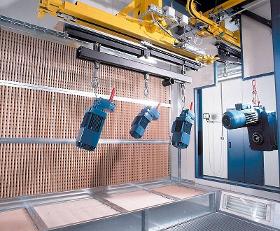
RIPPERT ANLAGENTECHNIK GMBH & CO. KG
Germany
Spray walls and spray booths with dry separation via pre-filters and fine filters. Spray walls and spray booths with dry separation For lower utilisation times or overspray quantities, spraying systems with dry separation offer a meaningful alternative to water-sprinkled systems. The Rippert modular spraying system type RTS enables individual adaptation to the respective case of need. Function The overspray is caught by the exhaust air stream and fed to the filter. The solids are filtered out here, while the cleaned exhaust air is blown out into the open air by the fan. Versions The entire spray wall and the drip tray are made of galvanised sheet steel. The basic version consists of a wall with a two-fold filter stage. The attached radial fan is equipped with spark protection in the suction nozzle as well as an explosion-proof motor. The first filter stage is formed by a paper filter or a baffle plate filter, consisting of two rows of galvanised sheet metal lamellae arranged one behind the other. A glass fibre fine filter arranged directly behind it represents the second filter stage. The spray wall can additionally be equipped with removable or fixed side and ceiling panels. Each version is also available with floor suction pan, available with an integrated 2-stage filter and grating cover. Accessories In addition, the spray wall can be equipped with various accessories from the Rippert product range, such as explosion-proof lights, energy-saving flaps, turntables, etc. We recommend the installation of a supply air system for the replacement of the exhausted air. Cleaning / maintenance The spray wall is designed such that the filter elements can be exchanged with little effort in a very short time. For faster cleaning, baffle plate filters should by sprayed with a release agent (e.g. strippable varnish) before being put into operation. Underfloor paint mist extraction With dry separation, consisting of a support structure with attached paper filter, grating cover and a suction duct with air quantity adjustment.
Request for a quote
RIPPERT ANLAGENTECHNIK GMBH & CO. KG
Germany
Standard advantages: RTS-Rotation – low-maintenance dry spray booth Overspray dry separation demonstrates its strengths in practice above all when relatively large quantities of paint have to be processed and the overspray portion cannot be reduced any further. Spray booth with dry separation are usually equipped with disposable filters or manually regenerative filters. These cause costs for spare filters, maintenance and disposal. In addition to that, operation has to be interrupted in order to exchange the filters. The ‘RTS rotation’ system was developed by Rippert in order to reduce these costs and tooling times. Maintenance intervals and filter service lives are prolonged significantly in comparison with conventional systems due to the new brush pre-filtration. How the ‘RTS-Rotation’ system works Overspray separation in the RTS-Rotation system takes place by means of a pre-filter and a fine filter stage. The pre-filter stage is formed by vertical, slowly rotating brush rollers. The bristles present a very large total surface area and absorb the adhesive particles from the overspray. During the slow rotation, the paint particles can dry on the tips of the bristles. This results in slowly growing cakings on the bristles. Scrapers are mounted in the area behind the brush rollers that continuously remove these cakings from the bristles. The dislodged, hardened material falls into the drawers arranged under the brushes and can thus be simply disposed of. The dry paint dust may often be disposed of as ‘commercial waste’. The brushes otherwise require little maintenance and do not need to be exchanged or renewed. The fine filter stage is formed by a special fleece filter, which is arranged above the brush rollers and must be manually maintained or exchanged in the standard version. The maintenance intervals depend on the paint material used. Automatic cleaning or an external fine filter with automatic cleaning is also possible as an option. Over 10 years of operational experience shows that around 75 to 95% of the overspray is separated out by the pre-filter stage and the rest by the fine filter stage. The degree of separation depends strongly on the type of paint and the drying reactivity during the flying phase. Use of the RTS-Rotation with the following paints Before practical use, the paints are tested and approved in Rippert’s own pilot plant. Stove enamels and 100% UV paint systems cannot be used. The horizontal version Furthermore, it is possible to use the system as a horizontal underfloor extraction system. This version is used, for example, by a machine manufacturer for large parts. In addition, a drag conveyor with gulley extraction is used there in order to automatically transport the particles cleaned off the brushes out of the pit. Conclusion The RTS-Rotation system is particularly useful when relatively large quantities of paint with an unavoidable overspray portion have to be processed, as otherwise a great deal of residual waste would result using conventional technology. Compared to water-sprinkled spray walls and normal dry spray booths the amortisation period is shorter; it is frequently less than two years.
Request for a quote
PERKUTE MASCHINENBAU GMBH
Germany
Paint stripping system Clean-o-mat RC - E The proven and solid single-chamber system for the automatic and efficient paint stripping of large and small components. The paint stripping of the products is carried out in the spray process using an appropriate organic bio stripper. Following this, the rinse occurs in a separate system. The PERKUTE-system: economically - environmental – effektive Basic equipment Compact and sturdy construction Made of stainless steel Simple operation Space-saving 3D-blast pipe system incl. fan nozzles Low water pressure switch as dry-run protection Suction filter made of stainless steel front of the pump Automatic steam extraction Electronic basket drive 2“ ball valve for the tank emptying Safety limit switch at cover Stainless-steel pump Technical data No lieability accepted for specifications, which are subject to alteration. Tailor-made machines to be quoted on request. Before and after pictures
Request for a quote
SIEMPELKAMP MASCHINENFABRIK GMBH
Germany
Siempelkamp's continuous saws are a tried-and-tested solution for plants with highest outputs. The saw throughput does not depend on the number of cuts and is therefore superior to other cutting solutions, particularly for large master boards. Continuous saws also permit in-line quality grading. This means that the combined sanding and saw line is able to deliver sorted stacks of nished boards from the master boards in a single stage of work. This allows investment and operating costs to be minimised. The cut-to-size saws may be combined in-line with a sanding machine or set up separately just as a cutting system Features and functions Continuous saws for longitudinal and horizontal cuts Scoring unit and main saw blade for top-quality edges Reliable guiding of the board using chains and/or rollers to ensure accurate cutting Trimming of the edges directly by the tool, no additional conveyors and follow-up work required
Request for a quote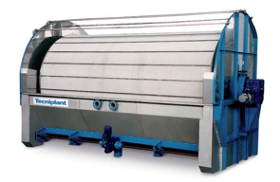
OGE GROUP
Germany
API Separators CPI – Corrugated Plate Interceptor IGF – Induced Gas Flotator Drum Vacuum Filters Vacuum Belt Filters Flotators Oily Water Treatment Water Treatment Plants API Separators CPI – Corrugated Plate Interceptor IGF – Induced Gas Flotator Drum Vacuum Filters Vacuum Belt Filters Flotators Oily Water Treatment Water Treatment Plants
Request for a quote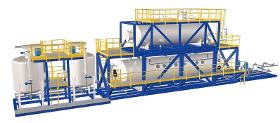
OGE GROUP
Germany
API Separators CPI – Corrugated Plate Interceptor IGF – Induced Gas Flotator Drum Vacuum Filters Vacuum Belt Filters Flotators Oily Water Treatment Water Treatment Plants API Separators CPI – Corrugated Plate Interceptor IGF – Induced Gas Flotator Drum Vacuum Filters Vacuum Belt Filters Flotators Oily Water Treatment Water Treatment Plants
Request for a quote
OGE GROUP
Germany
API Separators CPI – Corrugated Plate Interceptor IGF – Induced Gas Flotator Drum Vacuum Filters Vacuum Belt Filters Flotators Oily Water Treatment Water Treatment Plants API Separators CPI – Corrugated Plate Interceptor IGF – Induced Gas Flotator Drum Vacuum Filters Vacuum Belt Filters Flotators Oily Water Treatment Water Treatment Plants
Request for a quote
OGE GROUP
Germany
API Separators CPI – Corrugated Plate Interceptor IGF – Induced Gas Flotator Drum Vacuum Filters Vacuum Belt Filters Flotators Oily Water Treatment Water Treatment Plants API Separators CPI – Corrugated Plate Interceptor IGF – Induced Gas Flotator Drum Vacuum Filters Vacuum Belt Filters Flotators Oily Water Treatment Water Treatment Plants
Request for a quoteDo you sell or make similar products?
Sign up to europages and have your products listed

OGE GROUP
Germany
API Separators CPI – Corrugated Plate Interceptor IGF – Induced Gas Flotator Drum Vacuum Filters Vacuum Belt Filters Flotators Oily Water Treatment Water Treatment Plants API Separators CPI – Corrugated Plate Interceptor IGF – Induced Gas Flotator Drum Vacuum Filters Vacuum Belt Filters Flotators Oily Water Treatment Water Treatment Plants
Request for a quote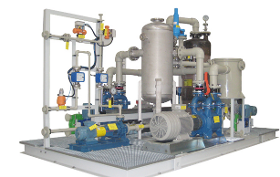
OGE GROUP
Germany
Solid Water Treatment Package We developed a Solid-Liquid Separation System to optimize the plant configuration in order to achieve a competitive solution, suitable to make the transportation and installation process more economical, and to provide benefits for the operating and maintenance activities.
Request for a quote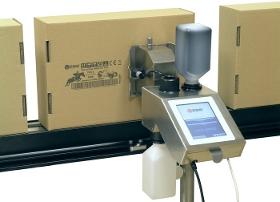
EBS INK JET SYSTEME GMBH
Germany
The ultra-modern complete system EBS 2500 enables high-resolution printing on a wide variety of surfaces, even on porous or highly absorbent ones. This makes it particularly suitable for use as a replacement for expensive labels. — Lightweight, compact and easy to install — Convenient creation & editing of artwork designs using a web browser and their transfer via an Ethernet interface — LCD 5.7'' touch color display for printer control, file management & maintenance — Works virtually with any operating system - no separate printer software required — Static text & many variants of variable text (including counter, date, time, expiration date) — Rotatable texts, graphics, barcodes — Freely selectable printing direction (to the right/left, upside down) — Automatic measurement of the conveyor belt speed — Multi-level user management with access control
Request for a quote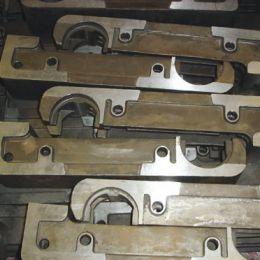
CASTSERVICE GMBH
Germany
The grinding and the combustion of natural resources such as wood and coal for energy production causes abrasive and thermal wear and decreases the service time of its wearing parts. For problems we offer you a consistent solution: we develop and supply ready to install wear-cast-parts made out of heat resisting gray cast iron, highly heat resisting stainless steel casting and wear resisting heat treatable steel. The use of CS-specific-materials results in a higher service life. Our grate bars can be found in roller grates, feed grates, traveling grates or horizontal grates. The development and manufacturing of water-cooled grate bars is also part of our product line. Our services include the preinstallation of single grate lines in order to check the dimensional stability and quality. We can also offer customer specific solutions for the entry area and the outrun area of rotary kilns in the field of grinding tools and crushing tools.
Request for a quoteResults for
Separating system - Import exportNumber of results
22 Products